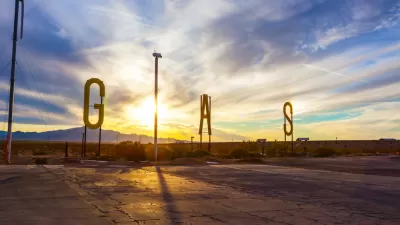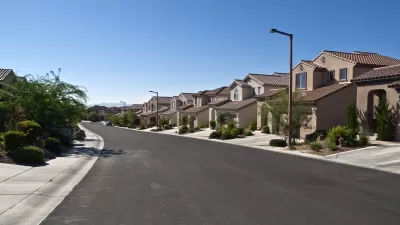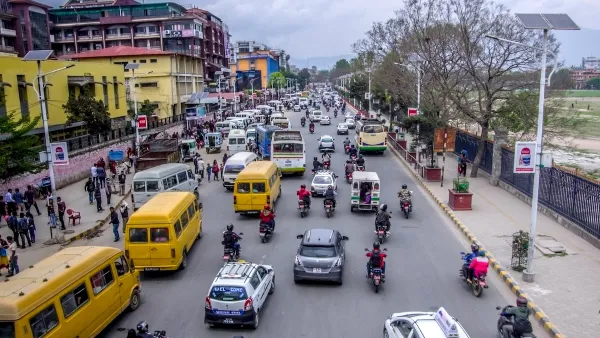A growing number of cities in California have prohibited the construction of new gas stations. Los Angeles could soon consider an ordinance to do the same—in a landmark move for the city some believe to be a symbol of car-dependent sprawl.

The city of Petaluma in the North Bay Area in California in 2021 was the first city in the country, and maybe the world, to prohibit the construction of new gas stations as a climate action.
It turns out, that Petaluma was first, but it hasn’t been the last.
“Since Petaluma’s decision, four other cities in the Bay Area have followed suit, and now, leaders in California’s most car-centric metropolis are hoping to bring the climate-conscious policy to Southern California,” reports Grace Toohey for the Los Angeles Times.
Los Angeles, the state’s largest city by population, and a symbol of sprawl in public perception, is among those cities to have consider a similar change, although a proposal by Councilmember Paul Koretz to begin drafting a ordinance to ban new gas stations hasn’t yet produced results.
“While Petaluma officials at the time called its new gas pump ban ‘completely uncontroversial,’ it’s unclear how such a policy would go over in Los Angeles, a city with about 65 times as many people and a transportation infrastructure that still heavily relies on vehicles,” writes Toohey. “Lobbyists for gas stations said they will oppose the motion in L.A. if it moves forward.” A 2020 executive order by Gov. Gavin Newsom to sunset the sale of gas vehicles in the state by 2035 provides some context, and incentive, for Los Angeles to figure it out.
FULL STORY: California cities ban new gas stations in battle to combat climate change

Planetizen Federal Action Tracker
A weekly monitor of how Trump’s orders and actions are impacting planners and planning in America.

Chicago’s Ghost Rails
Just beneath the surface of the modern city lie the remnants of its expansive early 20th-century streetcar system.

San Antonio and Austin are Fusing Into one Massive Megaregion
The region spanning the two central Texas cities is growing fast, posing challenges for local infrastructure and water supplies.

Since Zion's Shuttles Went Electric “The Smog is Gone”
Visitors to Zion National Park can enjoy the canyon via the nation’s first fully electric park shuttle system.

Trump Distributing DOT Safety Funds at 1/10 Rate of Biden
Funds for Safe Streets and other transportation safety and equity programs are being held up by administrative reviews and conflicts with the Trump administration’s priorities.

German Cities Subsidize Taxis for Women Amid Wave of Violence
Free or low-cost taxi rides can help women navigate cities more safely, but critics say the programs don't address the root causes of violence against women.
Urban Design for Planners 1: Software Tools
This six-course series explores essential urban design concepts using open source software and equips planners with the tools they need to participate fully in the urban design process.
Planning for Universal Design
Learn the tools for implementing Universal Design in planning regulations.
planning NEXT
Appalachian Highlands Housing Partners
Mpact (founded as Rail~Volution)
City of Camden Redevelopment Agency
City of Astoria
City of Portland
City of Laramie





























